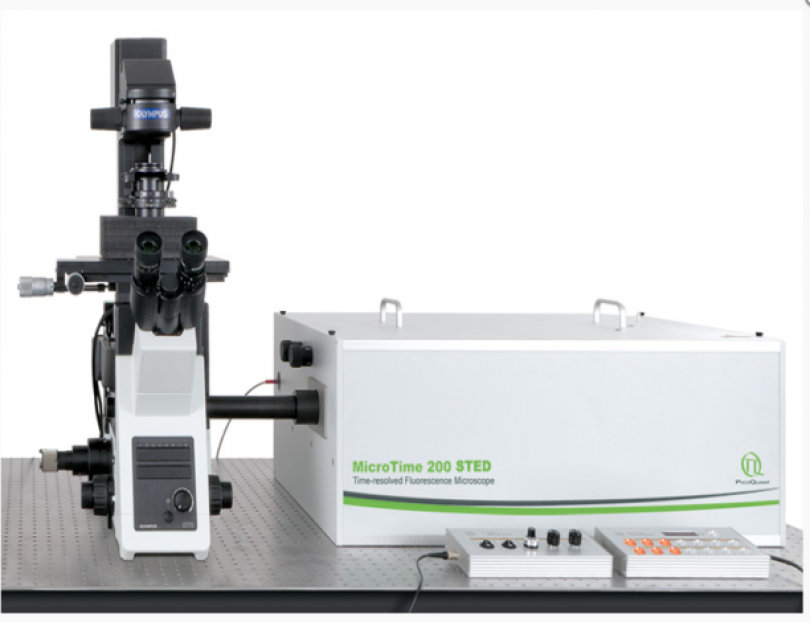Common Applications
|
rapidFLIM |
rapidFLIM measurements enable the imaging of dynamic processes via fluorescence lifetime imaging (FLIM). This new approach allows for fast FLIM acquisition up to several frames per second for imaging of dynamic processes (e.g., protein interaction, chemical reaction, or ion flux), highly mobile species (e.g., mobility of cell organelles or particles, cell migration), and investigating FRET dynamics. More than 10 frames per second can be acquired, depending on sample brightness and image size. |
|
STED |
STED microscopy uses the principle of stimulated emission depletion. After exciting fluorophores in the laser focus, a second, donut-shaped focus of a laser with longer wavelength is used to actively de-excite the molecules in the periphery via stimulated emission. In the MicroTime 200 STED, the donut is created using a so-called EASYDonut phase plate. It is inserted into the beam path and changes the STED laser focus to a donut-shape, while leaving the excitation laser unaffected. This simple implementation makes spatial alignment of the two laser beams, which emerge from the same optical fiber, unnecessary and yields a spatial resolution of less than 50 nm. Due to the time-resolved data acquisition principle of the MicroTime 200 STED, it is additionally possible to apply time-gates to all measured data. This gated STED (or gSTED) approach leads to an enhanced resolution in images and a reduced observation volume for FCS. |
|
FCS |
Fluorescence Correlating Spectroscopy allows for determining diffusion coefficients and concentrations of fluorescently labelled molecules at nanomolar concentrations, both in vitro and in live cells. It is mostly useful for indirect studies of molecular activity in plasma membrane, in cytosol and in nucleus via following relative changes in diffusive behavior and/or concentration. This technique can also determine the mobility of molecules (e.g. movement, aggregation, association, dissociation, and conformational changes), help studying the intracellular dynamics (e.g. diffusion, active transport) and determine the stoichiometry of complexes |
|
FRET |
FRET (Lasers Förster Resonance Energy Transfer or Fluorescence Resonance Energy Transfer) is a technique using two carefully selected fluorophores that when in close enough proximity (10–100 Å), and suitable orientation, energy is transferred nonradiatively from the excited donor fluorophore to another acceptor fluorophore. It is largely used to investigate inter- and intramolecular distances, between one or more molecules. It can also monitor conformational changes of molecules and environmental parameters (e.g., pH) via FRET sensors. |







